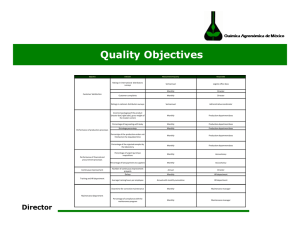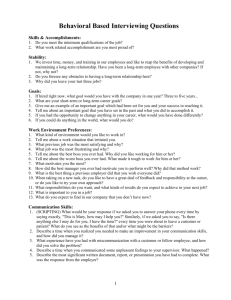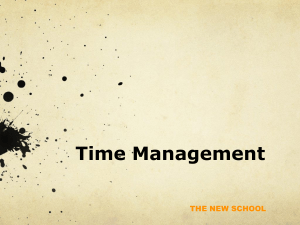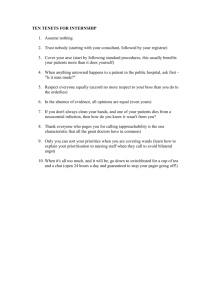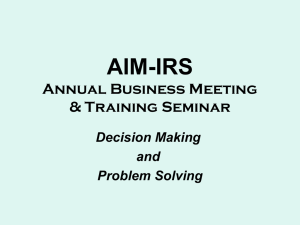Short introduction on rights in the workplace:
advertisement
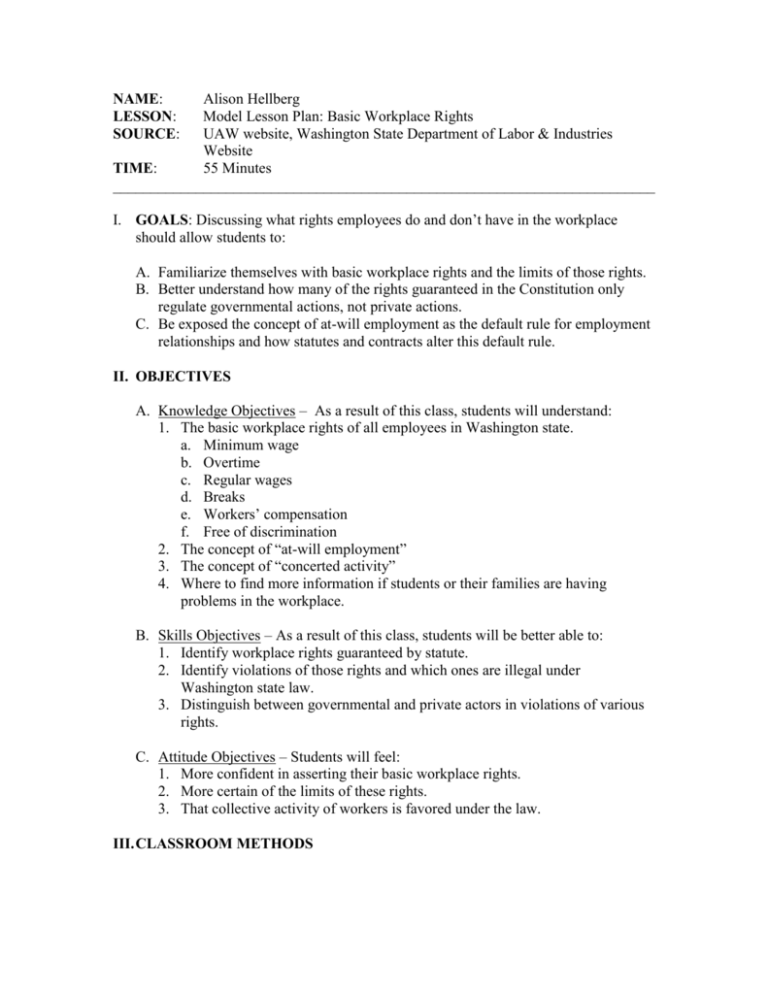
NAME: LESSON: SOURCE: Alison Hellberg Model Lesson Plan: Basic Workplace Rights UAW website, Washington State Department of Labor & Industries Website TIME: 55 Minutes ________________________________________________________________________ I. GOALS: Discussing what rights employees do and don’t have in the workplace should allow students to: A. Familiarize themselves with basic workplace rights and the limits of those rights. B. Better understand how many of the rights guaranteed in the Constitution only regulate governmental actions, not private actions. C. Be exposed the concept of at-will employment as the default rule for employment relationships and how statutes and contracts alter this default rule. II. OBJECTIVES A. Knowledge Objectives – As a result of this class, students will understand: 1. The basic workplace rights of all employees in Washington state. a. Minimum wage b. Overtime c. Regular wages d. Breaks e. Workers’ compensation f. Free of discrimination 2. The concept of “at-will employment” 3. The concept of “concerted activity” 4. Where to find more information if students or their families are having problems in the workplace. B. Skills Objectives – As a result of this class, students will be better able to: 1. Identify workplace rights guaranteed by statute. 2. Identify violations of those rights and which ones are illegal under Washington state law. 3. Distinguish between governmental and private actors in violations of various rights. C. Attitude Objectives – Students will feel: 1. More confident in asserting their basic workplace rights. 2. More certain of the limits of these rights. 3. That collective activity of workers is favored under the law. III. CLASSROOM METHODS A. Begin class by asking which students have jobs. Ask a few of the students where they work, how many hours a week they work. Why don’t they work more hours? Next show a few slides of child workers from the early 20th century as power point slides. Ask students questions about the students’ impressions of the slides. [5 minutes] 1. Why would employers hire children? (possible answers might include: they can pay them less, they don’t complain, they have small fingers/ hands and can reach into the machinery). 2. Does this still happen? (in other parts of the world, in the U.S. to a limited extent) Why does it no longer happen in the U.S.? Why are the students in school? Why are none of them working 10-12 hours a day in factories, on farms, etc.? a. Show power point slide about the FLSA: i. “The Fair Labor Standards Act was passed in 1938 that (among other things) prohibited child labor, created overtime after 40 hours of work per week, and provided for a minimum wage.” b. Give a general introduction to today’s topic: Your Rights in the Workplace. B. Give directions for the next activity. Working in groups of 2 or 3 (of their own choosing) students will pretend they are attorneys and two potential clients tell them about problems with their job. Students will make a list of possible claims the workers might have. 1. Read attached hypothetical aloud for students. a. Put students into groups and have them write down possible claims. [ 5 minutes] b. Bring the class back together and ask what claims they found. Have them be as specific as possible – coming up with calculations as to the real amount they should be paid, etc. Write these on the board [5 minutes] c. Once students have exhausted their ideas, go through power point slides with the following information [5-10 minutes]: i. “minimum wage in Washington state is $7.63 (14- and 15-year olds may be paid 85 percent of the adult minimum wage, $6.49)” ii. “The normal work week is 40 hours for every 7 day period. If you work more than 40 hours, every hour after that you should make 50% more of your wages. For example, if your wage is $10/ hours, if you work more than 40 hours, you should make $15/ hour for those overtime hours. Most agricultural workers, managerial workers, and some other workers do not have to be paid overtime.” iii. Wage Calculation Hourly Wage $ 7.63 $11.45 Total Hours 40 10 Wages $305.20 $114.50 $419.70 iv. “You have a claim against your employer if you make less than the minimum wage per hour or you are not paid overtime wages. You may be able to get double the amount the employer owes you.” v. “Under Washington state law, you must be paid on set paydays and receive a statement of your wages. Payday must be at least once a month. Paying you late is illegal.” vi. “Under Washington state law, you have the right to a paid 10-minute rest break for each 4 hours you work. You must be allowed a meal break of at least 30 minutes about midway through your shift. Your employer does not have to pay you for the meal break unless you are required to remain on duty.” d. The following two rights were not included in the previous hypothetical, but are two more rights you have in the workplace [also put on power point slides]: i. “Help if you are hurt on the job: If you are hurt on the job, go to a doctor and file a workers’ compensation claim. The State will pay medical bills for your injury and often replace some of your wages if you need time off to recover.” [remind them of torts and explain that you are not allowed to sue your employer for negligence, but your employer pays insurance so ANY on-the-job injury is paid for] ii. “Work free of discrimination: It is against the law for you to be fired, demoted, harassed, or given worse work assignments because of your in the workplace on account of your race, national origin, sex, age, language, religion or disability.” C. Ask for 9 volunteers. One of the teachers will take them out into the hall with 3 role play activities. While he is gone, the other teacher will spend a few minutes explaining to the class that they will see 3 role plays and they’ll want to pick out ways in which the employers violated the employees’ rights. 1. While waiting for the other students to return, the other teacher will have the students brainstorm basic rights from classes related to human rights and other constitutional rights, such as: a. Freedom of Speech b. Freedom of Assembly c. Freedom of Religion d. e. f. g. Freedom of the Press Innocent until proven guilty Protection against search and seizure Protection against self incrimination 2. For role play # 1, students will likely find that employer violated various rights listed above. After a little discussion, show power point slide: a. “At-will employment – An employer may end the employment relationship at any time for any reason or for no reason.” b. The employer has done nothing illegal in this situation. Whose actions does the Constitution regulate and limit? The government’s. 3. Same discussion for role play # 2 – emphasize concept of at-will employment. 4. For role play # 3, have the same discussion, but in this case, the employer’s firing was illegal. Show power point slide: a. “Concerted Activity: The right of two or more to act together to try to improve their workplace is called concerted activity. i. -You do not have to be in a union to have this right. ii. - Firing or mistreating workers who engage in concerted activity is illegal. iii. - If you have a complaint to make to your employer, protect yourself by going with at least one other worker to complain together.” b. Explain that the laws, particularly the National Labor Relations Act favors workers acting collectively. [20 minutes] D. To close, talk about levels of protection, unions, negotiating contracts to get around the “default” rule of at-will employment. IV. EVALUATION A. Student participation in small groups and larger classroom discussion. Hypothetical Juan and Antonio have been working for the last 3 months for a landscaping company. They work 6 days a week and at least 50 hours each week. Their bosses give them a 20 minute meal break each day, but no other breaks. They are supposed to be paid every Friday. They are normally paid $300 weekly in cash and do not receive anything in writing about their wages. They have not been paid for the last 2 weeks of work because the employer says he does not have enough money to pay them. What claims do these workers have against their employer? ROLE PLAY # 1 Characters: Boss and 3 employees: Chris, Pat and Terry Scene: Manager of a fast food restaurant asks the three employees to stop working and come to an emergency meeting. - Boss singles out Terry and tells him that in order to keep his job, he must get a haircut and stop wearing such baggy pants. - Next, Boss says that someone has been stealing from the cash register. Boss has been going through all of the employees’ lockers to see who did it. - The employees begin to complain about the boss’ actions. Boss says that those complaining about the policy must be guilty of the thievery. The employees protest even more. Boss fires Pat and assigns Chris to cleaning the toilets for the rest of the week (even though it isn’t his turn). ROLE PLAY # 1 Characters: Boss and 3 employees: Chris, Pat and Terry Scene: Manager of a fast food restaurant asks the three employees to stop working and come to an emergency meeting. - Boss singles out Terry and tells him that in order to keep his job, he must get a haircut and stop wearing such baggy pants. - Next, Boss says that someone has been stealing from the cash register. Boss has been going through all of the employees’ lockers to see who did it. - The employees begin to complain about the boss’ actions. Boss says that those complaining about the policy must be guilty of the thievery. The employees protest even more. Boss fires Pat and assigns Chris to cleaning the toilets for the rest of the week (even though it isn’t his turn). ROLE PLAY # 2 Characters: Boss and 1 employee Scene: Boss is working at desk and employee enters and asks to speak to Boss. Employee begins to explain his/ her excellent work record and years of loyalty and asks for a raise. Boss says no and responds that employee is fired for being a trouble maker. ROLE PLAY # 2 Characters: Boss and 1 employee Scene: Boss is working at desk and employee enters and asks to speak to Boss. Employee begins to explain his/ her excellent work record and years of loyalty and asks for a raise. Boss says no and responds that employee is fired for being a trouble maker. ROLE PLAY # 3 Characters: Boss and 2 employees Scene: Boss is working at desk and employees enter and ask to speak to Boss. Employees explain that the employees have been discussing it and would like longer breaks and a raise. Boss calls them troublemakers and fires both of them. ROLE PLAY # 3 Characters: Boss and 2 employees Scene: Boss is working at desk and employees enter and ask to speak to Boss. Employees explain that the employees have been discussing it and would like longer breaks and a raise. Boss calls them troublemakers and fires both of them immediately. ROLE PLAY # 3 Characters: Boss and 2 employees Scene: Boss is working at desk and employees enter and ask to speak to Boss. Employees explain that the employees have been discussing it and would like longer breaks and a raise. Boss calls them troublemakers and fires both of them immediately.

